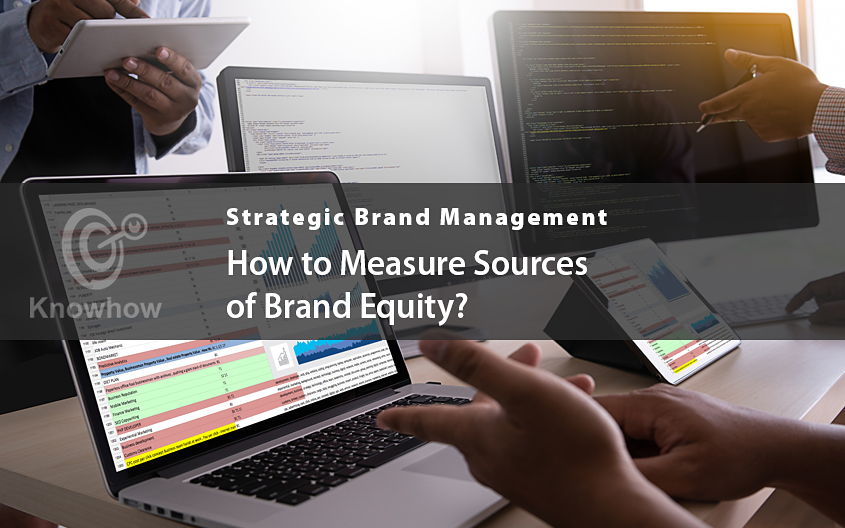
How do you create the perfect marketing communication programme? You measure and seek to understand the way your consumers think. What’s more, you also have to understand what the current level of brand knowledge among your customers is. That way, you’ll know where to aim your marketing efforts.
How to Access the Minds of Consumers?
In theory, every marketer should have enough in-depth knowledge about the way their consumer thinks, feels, and acts toward their brand to be able to make a mind map of sorts. However, since brand awareness is consumer-based and confined within the mind of the consumer, that isn’t such an easy task.
The ultimate goal is to measure the way marketing programmes affect the buying habits of consumers. But how do you achieve that? You have to develop strategies and techniques that will essentially convert thoughts and emotional attachments into hard data that you can analyse. A particularly crucial step here is creating a measurement system that can tell you about the source of brand equity. Here are some research techniques that you can apply.
Qualitative Techniques
Questionnaires
Basic questions and surveys can provide you with a lot of information. Giving your consumers sets of questions can help you record their response to your brand. What’s more, this is a perfect technique to find out the thoughts and feelings consumers might have about your brand. You can even make the questions specific and inquire about particular features of your products as well as the overall experience.
Customer Behaviour
To understand how your customers make their purchasing decisions, you have to look closely at their behaviour. You can use oral and written surveys to see what your customers factor in when they make their choices. Furthermore, you can also find out if they give some factors a certain level of priority, or if they make their purchasing decisions at a specific time of the year, etc.
Open-End Questions
Open-end questions, or free associations, are the perfect way to measure brand exposure, image, and awareness. Here’s a good example. Ask your consumers what the first thing that comes to their minds when they hear the name of your brand is. Based on their answers, you can see if they have an emotional attachment to the brand.
However, you can’t just ask your questions willy-nilly. You have to design them properly, so they lead you to the information that’s crucial to you. Furthermore, there also has to be a hierarchy of questions. You should start by asking about the overall image and then move down to more specific issues that deal with particular features or product attributes.
The Downfalls of Open-Ended Questions
Open-ended questions, although often very useful, have some downfalls as well. Firstly, you have to rely on the honesty of your examinee. Not everyone will share their true feelings with you. That’s especially true if they find their answers embarrassing or socially unacceptable. For example, you’ll rarely hear a consumer tell you they buy a product because it gives them a better social status. Instead, they will act more casually and give a dishonest answer, but this is only natural.
Furthermore, open-ended questions can make a person unwilling to share. After all, they don’t know you, and you’re asking them to share their feelings with you. However, you can overcome this problem by allowing the customer to fill in the answers to their liking. You can also try a projecting technique. Ask your customers to compare the brand with non-related characters, objects, or people. You can later try to analyse their answers. Still, this technique is far from perfect.
Quantitative Techniques
You can use quantitative techniques as an alternative solution to your research. Ask your consumers to rank your product and brand, for example.
These techniques focus on brand awareness and the perception that consumers have of your brand. Here, the recognition and recollection are crucial.
If the customer can recall your brand immediately and tell you what they associate it with, you can get a pretty clear image of the level of brand awareness. What’s more, you can also test if the consumers can identify your brand under challenging circumstances. For example, you can give them a part of the product and see if they can recognise the brand. Furthermore, you can ask them which brands they associate with attributes that your brand has, and see if they show ample recollection.
Qualitative techniques are also used to understand:
- brand image
- response
- purchase decisions
- consumer-brand relationship
- consumer loyalty
- long-term commitment
Both qualitative and quantitative techniques will give you an excellent insight into the perspective of the consumer. Qualitative methods analyse brand association and attitude towards the brand, while quantitative techniques analyse brand awareness.
Related content:
Strategic Brand Management Knowhow – learn more about strategic brand management with our collection of informative educational articles.
From printed company pens, logo printed mugs, water bottles, eco-friendly giveaways, promotional clothing, printed notebooks, and promotional umbrellas, here at GoPromotional we believe that you are sure to find the perfect promotional items to help successfully market your brand.
If however, you require further information or have any specific questions, don’t hesitate to give a member of our experienced team a call on 0800 0148 970 or simply email us today.






